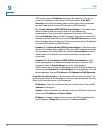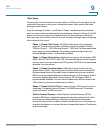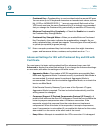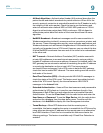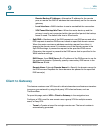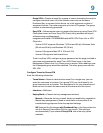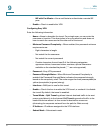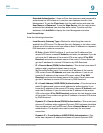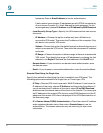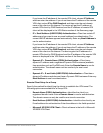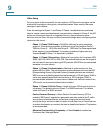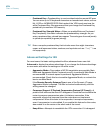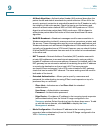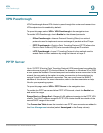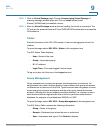
VPN
Client to Gateway
94 Cisco RV320/RV325 Administration Guide
9
hostname. Enter an Email Address to use for authentication.
If both routers have dynamic IP addresses (as with PPPoE connections),
do not choose Dynamic IP + Email Address for both gateways. For the
remote gateway, choose IP Address and IP Address by DNS Resolved.
• Local Security Group Type—Specify the LAN resources that can access
this tunnel.
- IP Address—Choose this option to allow only one LAN device to
access the VPN tunnel. Then enter the IP address of the computer. Only
this device can use this VPN tunnel.
- Subnet—Choose this option (the default option) to allow all devices on a
subnet to access the VPN tunnel. Then enter the subnetwork IP address
and mask.
- IP Range—Choose this option to allow a range of devices to access the
VPN tunnel. Then identify the range of IP addresses by entering the first
address in the Begin IP field and the final address in the End IP field.
• Domain Name—If you choose to use domain name authentication, enter
the domain name.
• Email—If you choose to use email authentication, enter the email address.
Remote Client Setup for Single User
Specify the method for identifying the client to establish the VPN tunnel. The
following options are available for a Single User, or Tunnel type, VPN:
• IP Only—Remote VPN client has a static WAN IP address. If you know the
IP address of the client, choose IP Address, and then enter the address. If
you do not know the IP address of the client, select IP by DNS Resolved,
and then enter the domain name of the client on the Internet. The router gets
the IP address of the remote VPN client by using DNS Resolved, and the IP
address of the remote VPN client is displayed in the VPN Status section of
the Summary page.
• IP + Domain Name (FQDN) Authentication—Client has a static IP address
and a registered domain name. Also enter a Domain Name to use for
authentication. The domain name can only be used only for one tunnel
connection.



